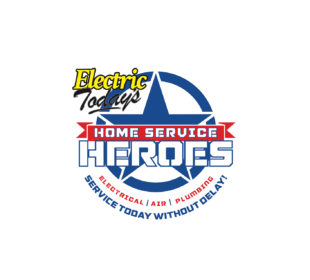Every three years the Electrical Safety Foundation International (ESFI) updates the National Electric Code, a regionally adoptable standard focusing on the safe installation of electrical wiring and equipment. It’s important information for both electricians and homeowners as it offers the latest guidelines for remodeling and construction projects. The changes only go into effect after it is adopted by the state or local jurisdiction. In May, in addition to trumpeting the updated National Electric Code, the ESFI released a variety of informational tools online.
These free fact sheets and templates are used to educate communities on electrical safety hazards. Understanding the basic safety principles can greatly reduce the dangers associated with electrical wiring. We are highlighting the most relevant material from their comprehensive campaign including surge protection and childproofing the outlets in your home. Download the complete Electrical Safety Illustrated 2017 for a comprehensive view of their materials.
Surge Protection
A surge is an unwanted increase in voltage that can damage, degrade or destroy electronic equipment. The National Manufacturers Association estimates that 60 – 80% of surges originate internally (from within a home or business). Surges can happen when large appliances, including air conditioners, are turned on and off. They can also originate from electric utilities or lighting. There are two levels of surge protection: point-of-use and whole home.
- Easy to use (just plug in).
- Only protects electronics that are directly plugged into the device.
- Must be replaced over time – or after a major surge event.
- Installation must be performed by a professional electrician.
- Protects your entire electrical system
- Protects against larger surges
- Provides longer-lasting surge protection
Tamper Resistant Receptacles
Studies have shown that most toddlers are able to remove some type of outlet cap within 10 seconds. Households with children four years old and under should childproof their accessible outlets by installing Tamper Resistant Receptacles.
- Tamper Resistant Receptacles are a permanent solution for outlet covers.
- Built-in shutters prevent objects from being inserted into the outlet.
- Required by the National Electrical Code since 2008.
- Tamper Resistant Receptacles must be placed in the following areas: Laundry Room, Bathroom, Family Room, Garage, Hallways, Living Room, Bedroom, Dining Room, Outdoors, and Kitchen.
- New in 2017: Tamper Resistant Receptacles are required in new and renovated Childcare Facilities, Hotel and Motel Guest Rooms, Preschools, and Elementary Education facilities.
Ground Fault Circuit Interrupters (GFCIs)
A “ground fault” occurs when there is an unintentional flow of electricity between an electrical current source and a grounded surface. Without proper protection, there is the risk of electrical shock if a person comes into contact with an energized component. Placement is essential in areas where an outlet is close to a water source such as a bathroom or kitchen. GFCIs have saved thousands of lives since being introduced by the NEC in the 1970s. The Consumer Product Safety Commission estimates that 50% of home electrocutions have been prevented by GFCIs. GFCI protection is required for outlets installed in:
- Bathrooms
- Kitchens
- Garages
- Outdoor Outlets
- Laundry Areas
- Within 6 Ft. of a Sink
- Within 6 Ft. of a Bathtub or Shower
- Balconies, Decks, and Porches
Home Service Heroes is dedicated to keeping our customers safe from electrical hazards, which is why we support the Electrical Safety Foundation International (ESFI) and the updated National Electric Code. If you have any questions or concerns regarding the code updates – or any other residential electrical questions, don’t hesitate to give us a call! Our professional electricians are always here to help our Tampa Bay neighbors. Call (813) 696-3398 to talk to a qualified technician or make a service appointment.
